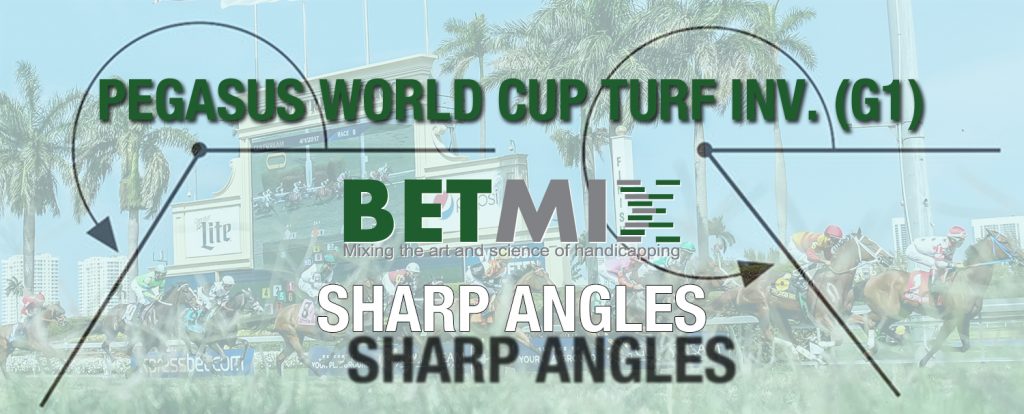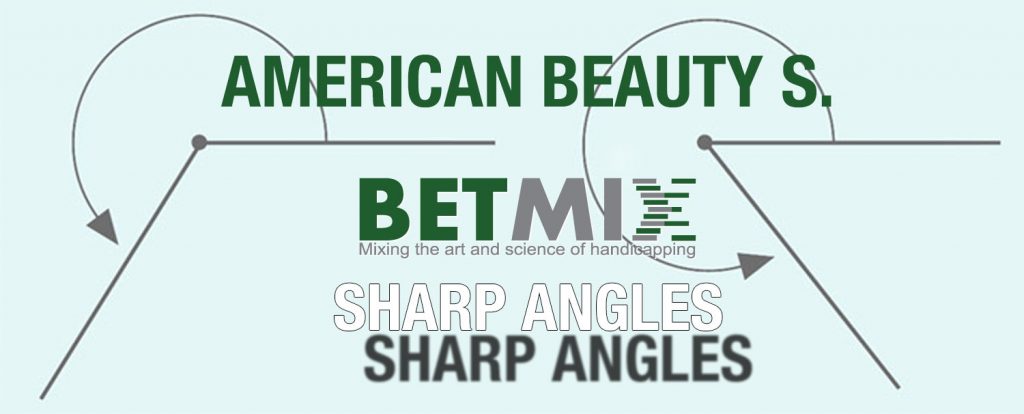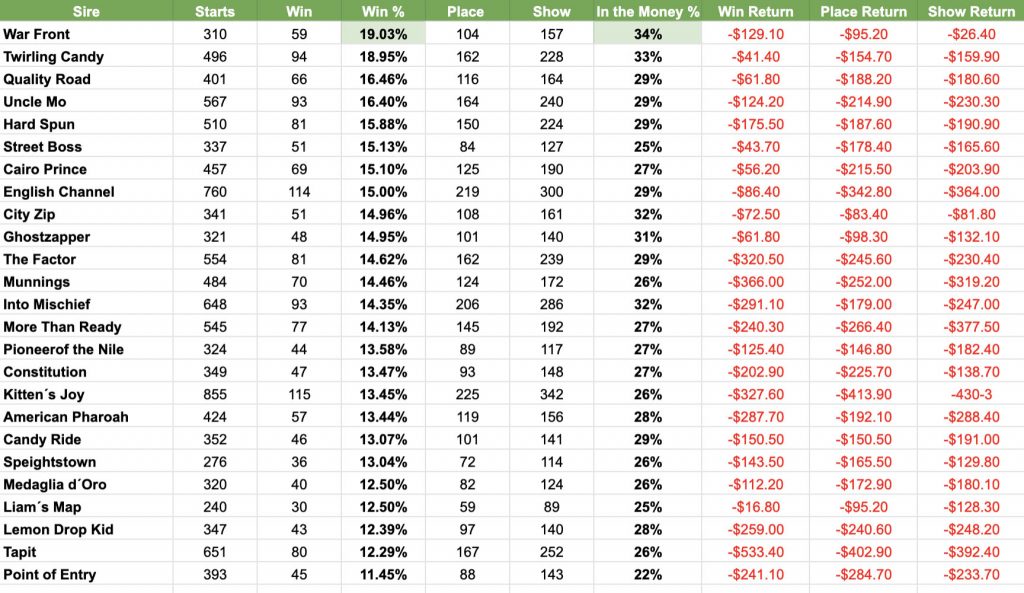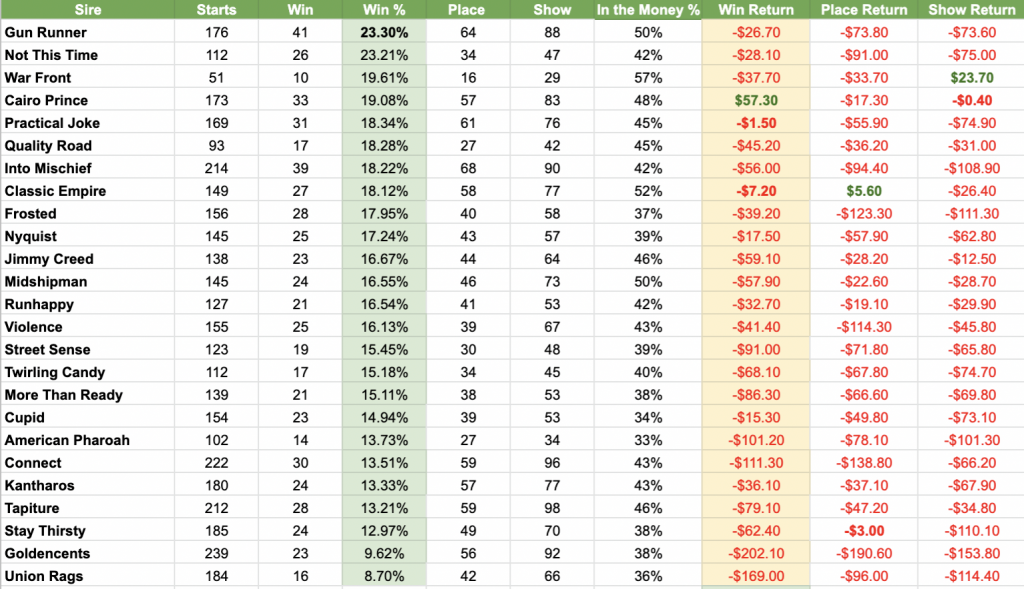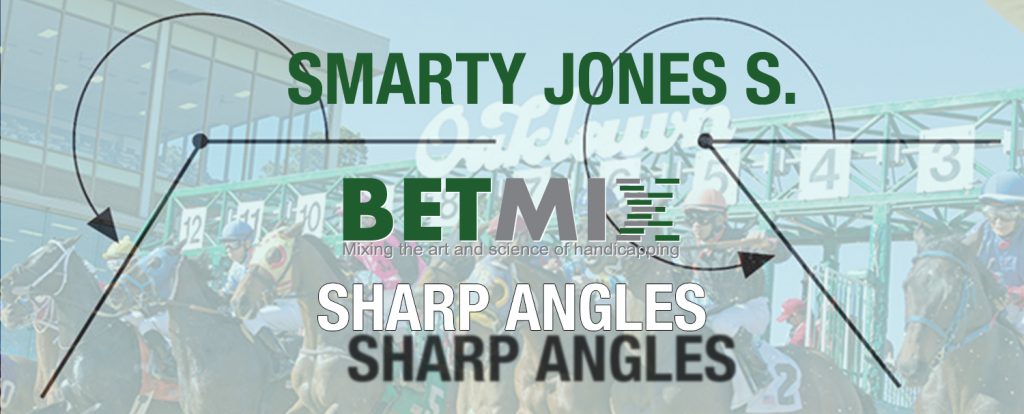February 1, 2022 | By Jeremy Plonk/www.horseplayernow.com
Originally published on www.xpressbet.com
Welcome to a continuing handicapping series for our Monday blog space, “Monday Myths.” Each week I’ll use the power of the Betmix database to take common handicapping assumptions and either support or dispel them with data. Betmix data powers the 1/ST BET app and its features like Angler and Birddog give data-minded horseplayers a treasure trove of information in which to query your own curiosities.
Assumption:
Tampa Bay Downs is a ‘quirky’ main track, and horses often struggle to successfully handle the footing.
Background:
Ranking up there almost as high as racetracker cliches like “You can’t beat the races,” “Bet the gray on a rainy day” and “The rail is dead today,” you can’t watch 2 races at Tampa Bay Downs without hearing about how ‘quirky’ the main track is. From TV commentators to railbirds, it’s a common refrain. But is it true?
Data Points:
I dialed up the Betmix database for all Tampa Bay Downs main track races over the past 3 years, going back to January 31, 2019. That sample of more than 1,100 races looked at horses who came out of races at Tampa Bay Downs and those who exited races elsewhere. I studied races at all class levels and based on common odds.
Overall Findings:
All horses last raced at Tampa Bay Downs won 12.9% with a $0.77 ROI.
All horses last raced away from Tampa Bay Downs won 13.2% with a $0.70 ROI.
//
All maiden horses last raced at Tampa Bay Downs won 12.0% with a $0.76 ROI.
All maiden horses last raced away from Tampa Bay Downs won 12.9% with a $0.68 ROI.
//
All claiming horses last raced at Tampa Bay Downs won 13.4% with a $0.79 ROI.
All claiming horses last raced away from Tampa Bay Downs won 12.3% with a $0.64 ROI.
//
All allowance horses last raced at Tampa Bay Downs won 14.1% with a $0.67 ROI.
All allowance horses last raced away from Tampa Bay Downs won 16.4% with a $0.95 ROI.
//
All stakes horses last raced at Tampa Bay Downs won 9.5% with a $0.64 ROI.
All stakes horses last raced away from Tampa Bay Downs won 15.2% with a $0.88 ROI.
//
All horses 5-1 or less last raced at Tampa Bay Downs won 24.6% with a $0.80 ROI.
All horses 5-1 or less last raced away from Tampa Bay Downs won 25.4% with a $0.79 ROI.
//
All favorite horses last raced at Tampa Bay Downs won 36.4% with a $0.83 ROI.
All favorite horses last raced away from Tampa Bay Downs won 39.9% with a $0.90 ROI.
Overall Findings:
Horses last raced away from Tampa Bay Downs won at a slightly higher percentage overall in all races than those exiting local races. They were a bit more successful in maiden races, more than 2.3% more successful in the allowance ranks and a whopping 5.7% at the stakes level. The only class where the locals fared best were in the claiming ranks with a 1.2% advantage. Among those horses expected to run well by the public, the out of towners won at 0.8% better among runners 5-1 or less and by a significant 3.5% higher rate with favorites.
Bottom line:
There’s nothing in the results that makes you consider Tampa a ‘quirky’ surface in which to avoid those from out of town. Outside of the claiming races, where the class probably is less a deciding factor than at other levels, the locals have trailed their ship-in foes. This one is a total myth, a falsity that Tampa is ‘quirky’ and unpredictable.
You can go into Betmix and run your own queries for a deeper dive into this theory and any that you can create. For instance, which trainers have done best bringing horses into Tampa?


